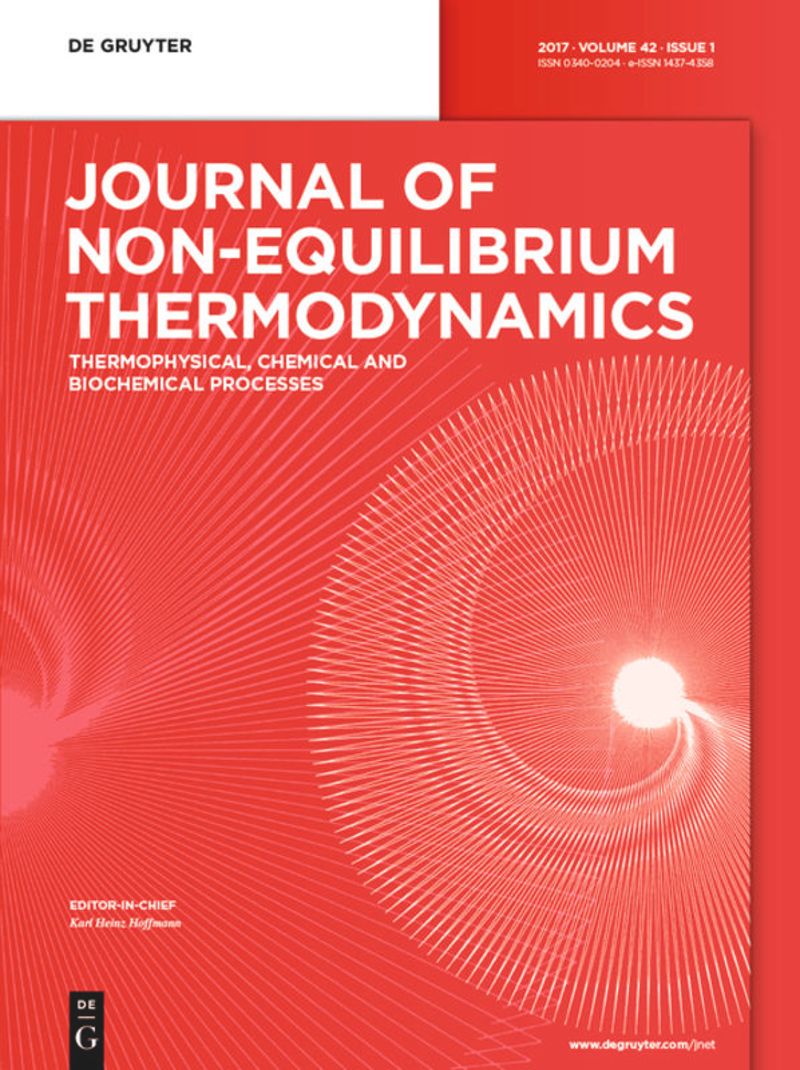基于管状固体氧化物燃料电池和环形热电发电机的混合系统的性能预测和操控策略
IF 4.2
3区 工程技术
Q1 MECHANICS
引用次数: 0
摘要
管状固体氧化物燃料电池(TSOFC)在运行过程中会产生大量余热,但由于几何形状不匹配,为平面固体氧化物燃料电池设计的现有余热回收技术无法直接应用于 TSOFC。为了有效收集余热,一种新的几何匹配混合系统(包括 TSOFC 和环形热电发生器 (ATEG))被协同整合在一起,以评估其性能上限。通过考虑各种热力学-电化学不可逆效应,建立并验证了描述混合系统的数学模型。建立了关键性能指标来评估潜在性能。计算结果表明,与独立的 TSOFC 相比,拟议系统的峰值功率密度和相应效率分别提高了 20.39% 和 13.89%。此外,放能破坏率降低了 7.04%。广泛的敏感性分析表明,较高的工作温度会提高系统的性能,而较大的电极扭曲度会对系统性能产生负面影响。此外,还探索了 ATEG 的各种优化途径,包括热电偶数量、电极腿径向宽度、电极腿厚度或环形参数等,以提高系统性能。三目标优化为整个系统提供了有效的设计方案,为系统的设计和运行提供了宝贵的见解。本文章由计算机程序翻译,如有差异,请以英文原文为准。
Performance prediction and manipulation strategy of a hybrid system based on tubular solid oxide fuel cell and annular thermoelectric generator
Tubular solid oxide fuel cells (TSOFCs) generate high-grade waste heat during operation, but the existing waste heat recovery technologies designed for flat solid oxide fuel cells cannot be directly applied to TSOFC due to the geometry mismatch. To efficient harvest the waste heat, a new geometry-matching hybrid system including TSOFC and annular thermoelectric generator (ATEG) is synergistically integrated to evaluate the performance upper limit. A mathematical model is formulated and verified to describe the hybrid system by considering various thermodynamic-electrochemical irreversible effects. Key performance indicators are established to assess the potential performance. Calculations show that the peak power density and corresponding efficiency of the proposed system are enhanced by 20.39 % and 13.89 %, respectively, compared to a standalone TSOFC. Furthermore, the exergy destruction rate is reduced by 7.04 %. Extensive sensitivity analyses indicate that higher operating temperatures enhance the system’s performance, while larger electrode tortuosity negatively affects it. Additionally, various optimization paths of ATEG are explored to improve the system performance, including considerations such as the number of thermocouples, leg radial width, leg thickness, or annular shape parameter. The three-objective optimization yields an efficient design solution for the entire system, offering valuable insights for its design and operation.
求助全文
通过发布文献求助,成功后即可免费获取论文全文。
去求助
来源期刊
CiteScore
9.10
自引率
18.20%
发文量
31
审稿时长
1 months
期刊介绍:
The Journal of Non-Equilibrium Thermodynamics serves as an international publication organ for new ideas, insights and results on non-equilibrium phenomena in science, engineering and related natural systems. The central aim of the journal is to provide a bridge between science and engineering and to promote scientific exchange on a) newly observed non-equilibrium phenomena, b) analytic or numeric modeling for their interpretation, c) vanguard methods to describe non-equilibrium phenomena.
Contributions should – among others – present novel approaches to analyzing, modeling and optimizing processes of engineering relevance such as transport processes of mass, momentum and energy, separation of fluid phases, reproduction of living cells, or energy conversion. The journal is particularly interested in contributions which add to the basic understanding of non-equilibrium phenomena in science and engineering, with systems of interest ranging from the macro- to the nano-level.
The Journal of Non-Equilibrium Thermodynamics has recently expanded its scope to place new emphasis on theoretical and experimental investigations of non-equilibrium phenomena in thermophysical, chemical, biochemical and abstract model systems of engineering relevance. We are therefore pleased to invite submissions which present newly observed non-equilibrium phenomena, analytic or fuzzy models for their interpretation, or new methods for their description.

 求助内容:
求助内容: 应助结果提醒方式:
应助结果提醒方式:


